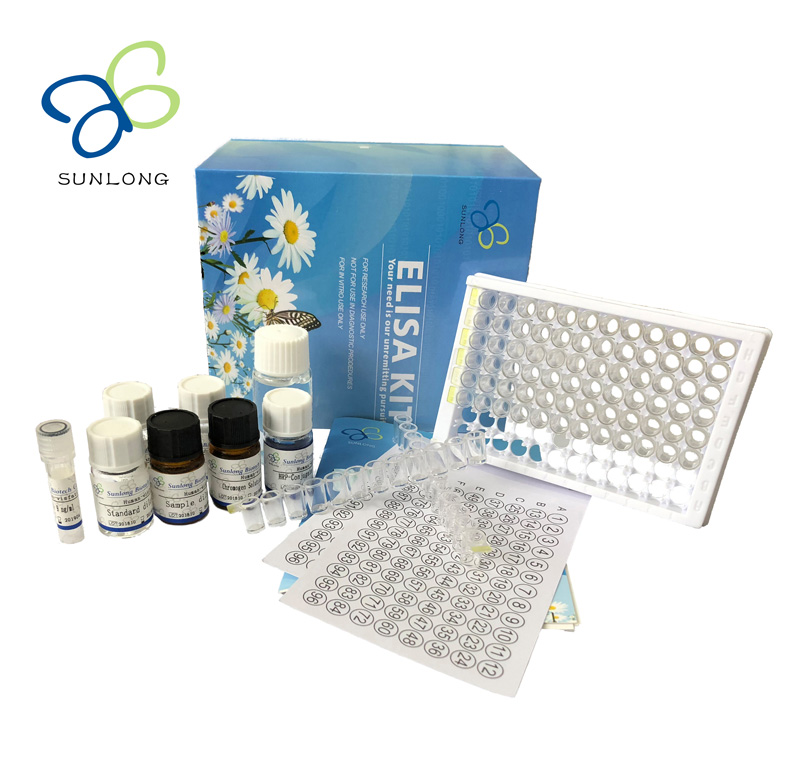General Malondialdehyde MDA ELISA Kit
Catalog No :
CAS Number :
Brand :
In Stock
Assay range:0.312-20nmol/mL
Sensitivity:0.088nmol/mL
Method: Competitive
Specifications:
| Application | ELISA-Based Assays |
| Storage Temperature | 2-8°C |
| Product Type | Elisa Kit |
| Product Grade | Molecular Biology |
The General Malondialdehyde (MDA) ELISA Kit is a quantitative immunoassay designed for the in vitro determination of MDA concentrations in serum, plasma, tissue homogenates, cell culture supernatants, and other biological fluids. This kit employs a competitive binding enzyme immunoassay technique, providing precise and reliable results for oxidative stress research and related studies.
Key Features
- Quantitative Detection:
- Measures MDA concentrations in various sample types with high accuracy.
- Wide Sample Compatibility:
- Compatible with serum, plasma (EDTA, heparin), tissue homogenates, and cell culture supernatants.
- Competitive ELISA Principle:
- MDA in the sample competes with a biotin-labeled MDA for binding sites on a pre-coated monoclonal antibody specific to MDA.
- High Sensitivity and Specificity:
- Specifically detects MDA with minimal cross-reactivity or interference.
- Robust Linearity:
- Provides consistent results across a range of dilutions.
Test Principle
The assay uses the competitive ELISA method, as outlined below:
- Pre-Coated Plate:
- Microtiter plate wells are pre-coated with a monoclonal antibody specific for MDA.
- Competition Binding:
- MDA in the sample or standard competes with a fixed amount of biotin-labeled MDA for binding sites on the pre-coated antibody.
- HRP Conjugation:
- Avidin conjugated to Horseradish Peroxidase (HRP) is added to amplify the signal.
- Substrate Reaction:
- A TMB substrate solution reacts with HRP, generating a color change proportional to the MDA concentration in the sample.
- Stop Reaction and Measurement:
- The reaction is terminated with a sulfuric acid solution, and the optical density (OD) is measured at 450 nm ± 2 nm. The OD value is inversely proportional to the MDA concentration.
- Concentration Calculation:
- MDA concentration in the samples is calculated by comparing OD values to the standard curve.
Specifications
| Property | Details |
|---|---|
| Assay Type | Competitive ELISA |
| Detection Range | Varies based on standard curve |
| Sensitivity | High sensitivity for low MDA levels |
| Sample Types | Serum, plasma, tissue homogenates, cell culture supernatants |
| Wavelength | 450 nm ± 2 nm |
| Linearity | Validated across various dilutions |
Linearity Results
| Dilution | Serum (n=5) | EDTA Plasma (n=5) | Heparin Plasma (n=5) |
|---|---|---|---|
| 1:2 | 108–116% | 106–118% | 99–111% |
| 1:4 | 95–107% | 103–113% | 107–117% |
| 1:8 | 105–115% | 81–93% | 101–111% |
| 1:16 | 94–104% | 98–98% | 98–108% |
Applications
- Oxidative Stress Research:
- Study MDA as a biomarker for lipid peroxidation and oxidative damage.
- Disease Monitoring:
- Investigate the role of oxidative stress in diseases such as cancer, diabetes, cardiovascular disorders, and neurodegenerative conditions.
- Drug Development:
- Assess the impact of antioxidants or drugs on oxidative stress biomarkers.
- Toxicology Studies:
- Evaluate oxidative stress induced by environmental or chemical exposures.
Kit Components
- Pre-coated microtiter plate.
- MDA standards for standard curve generation.
- Biotin-labeled MDA.
- Avidin-HRP conjugate.
- TMB substrate solution.
- Stop solution (sulfuric acid).
- Wash buffer.
- Sample diluent.
- Instruction manual.
Advantages
- High Sensitivity:
- Detects even low levels of MDA for early indications of oxidative stress.
- Reliable Precision:
- Consistent results within and between assays.
- Ease of Use:
- Pre-coated plates and ready-to-use reagents simplify the workflow.
- Wide Compatibility:
- Validated for a variety of sample types, making it versatile for multiple research needs.
Storage and Stability
- Store kit components at 4°C to maintain reagent integrity.
- Avoid repeated freeze-thaw cycles.
The General Malondialdehyde (MDA) ELISA Kit is an essential tool for researchers studying oxidative stress, lipid peroxidation, and their implications in health and disease. Its competitive ELISA design, robust linearity, and broad sample compatibility make it a reliable and versatile choice for oxidative stress research.




 0
0
